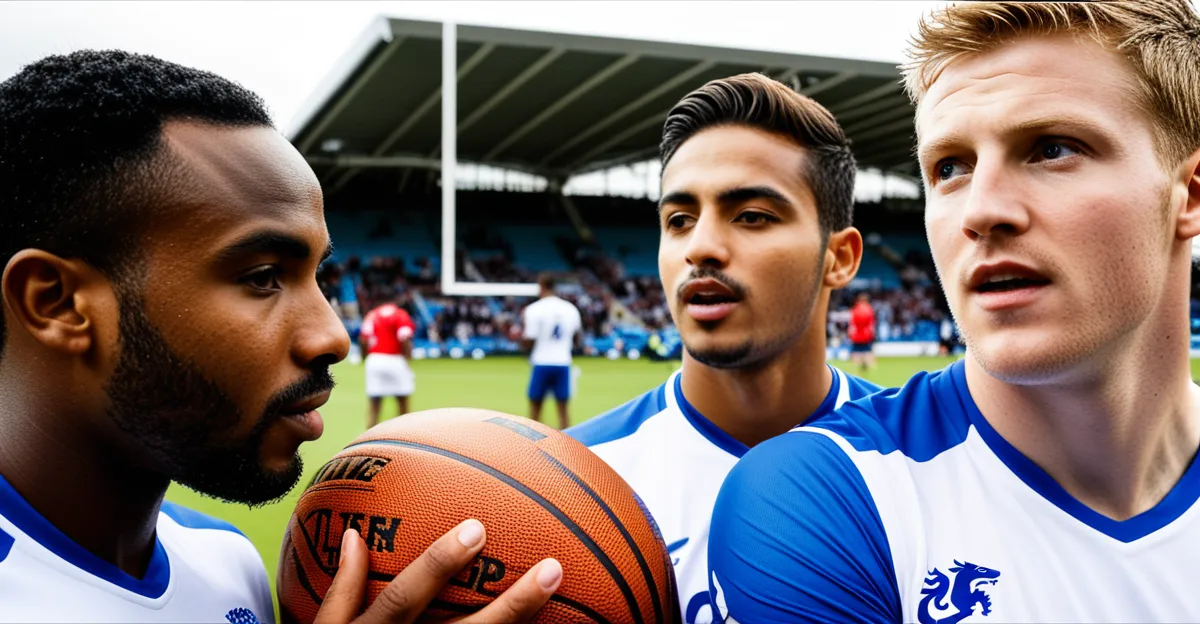Key Challenges to Inclusivity in UK Sports
Inclusivity challenges in UK sports stem from multiple, intertwined barriers affecting ethnic minorities, women, individuals with disabilities, and those from low-income backgrounds. These groups often encounter structural obstacles such as limited access to facilities, financial constraints, and social exclusion, which restrict their participation in sports.
Unconscious bias remains a significant barrier within sports environments. Coaches, officials, and teammates may inadvertently perpetuate stereotypes, limiting opportunities for underrepresented athletes. For instance, women and disabled athletes frequently report feeling undervalued or sidelined, highlighting the deep-rooted lack of representation and support.
In the same genre : How Does Football Impact Community Health in the UK?
Recent research underscores these issues, revealing persistent gaps in diversity across various sports disciplines. Studies show that ethnic minorities and low-income groups participate at lower rates compared to the national average, while women’s sports receive less funding and media coverage. Furthermore, disabled athletes face challenges not only in access but also in adaptive equipment availability.
Addressing these barriers requires a nuanced understanding of the cultural, economic, and structural factors contributing to exclusion. Recognizing the complex nature of inclusivity challenges in UK sports is the first step toward creating a genuinely diverse sporting landscape.
Have you seen this : What are the environmental benefits of hosting sports events in the UK?
Effective Strategies for Creating Inclusive Environments
Fostering inclusivity in UK sports requires deliberate and sustained effort. A critical inclusive sports strategy is training and education for coaches, volunteers, and staff focused on raising awareness around equality and unconscious bias. Educating those involved helps reduce stereotypes and creates a more welcoming environment for all participants.
Developing inclusive policies and codes of conduct within sports organizations reinforces expectations around behavior and respect. Clear guidelines ensure that everyone understands their role in promoting diversity and can be held accountable when barriers arise. These policies should explicitly address accessibility, anti-discrimination, and support for underrepresented groups.
Adjusting facilities and equipment is a practical step to meet the varied needs of diverse athletes. For example, providing adaptive sports gear or modifying changing rooms to be more accessible benefits disabled athletes and improves overall participation. Inclusive sports strategies that address physical accessibility demonstrate a commitment to removing UK sports barriers.
Together, these approaches promote an environment where diversity in sports thrives. Consistent application of training, robust policies, and adequate resources not only break down exclusivity but also empower individuals from ethnic minorities, women, disabled, and low-income groups to engage confidently in UK sports.
Key Challenges to Inclusivity in UK Sports
Inclusivity challenges in UK sports arise predominantly from persistent UK sports barriers that disproportionately affect ethnic minorities, women, disabled individuals, and people from low-income backgrounds. Financial restrictions and limited access to suitable facilities often prevent these groups from fully participating, reinforcing inequality.
An underlying factor exacerbating these challenges is unconscious bias. This bias influences decisions made by coaches, officials, and peers, often resulting in marginalization or underrepresentation of disadvantaged groups. For example, unconscious assumptions about ability or commitment can limit opportunities for ethnic minority athletes and women, deepening exclusion.
Recent research highlights stark disparities: ethnic minority participation rates remain below average, funding for women’s sports falls short, and disabled athletes struggle with insufficient adaptive resources. These inclusivity challenges are not isolated but interlinked, reflecting broader societal inequalities.
Addressing these UK sports barriers requires an informed understanding of these overlapping issues. Effective solutions depend upon recognizing the multifaceted nature of exclusion to promote genuine diversity in sports, ensuring all individuals can access and thrive within UK sports environments.
Key Challenges to Inclusivity in UK Sports
The inclusivity challenges in UK sports are deeply tied to persistent UK sports barriers that affect ethnic minorities, women, disabled persons, and low-income groups disproportionately. These barriers include not only physical obstacles like lack of accessible facilities but also systemic issues such as insufficient funding and underrepresentation in leadership roles.
Unconscious bias plays a crucial role in perpetuating these challenges. Coaches and officials may, often unintentionally, favour certain groups while sidelining others based on ingrained stereotypes. This bias limits access to opportunities, undermines confidence, and affects performance. For example, women athletes frequently face undervaluation, while disabled participants report inadequate adaptive equipment.
Recent research confirms significant gaps in diversity in sports. Participation rates among ethnic minorities are lower relative to the general population, and sports for women receive less media exposure and sponsorship. Disabled athletes often confront insufficient resources, which further hinders their engagement.
Addressing these UK sports barriers requires targeted interventions that recognize the complexity of social, economic, and cultural factors. Only by dismantling these layered obstacles can the UK ensure a truly inclusive sporting landscape that reflects and celebrates its diverse population.
Key Challenges to Inclusivity in UK Sports
Addressing inclusivity challenges in UK sports means confronting entrenched UK sports barriers that limit participation among ethnic minorities, women, disabled persons, and those from low-income backgrounds. These barriers often manifest as inadequate access to affordable facilities, scarcity of adaptive equipment, and limited representation in leadership roles, all symptoms of wider systemic inequalities.
A significant UK sports barrier comes from unconscious bias embedded in sports environments. This bias subtly influences decision-making by coaches and officials, leading to fewer opportunities and support for marginalized groups. For example, women athletes are frequently undervalued, and ethnic minority participants face assumptions about their commitment or skill level, which affects team selection and resource allocation.
Research reveals troubling statistics: ethnic minorities engage in sports at consistently lower rates than the average population; funding and media coverage for women’s sports remain disproportionately low, and disabled athletes encounter persistent obstacles due to under-resourced adaptive programs. These data points highlight ongoing inclusivity challenges and emphasize the need to address both structural and cultural factors hampering diversity in sports.
Only by acknowledging these overlapping issues can the UK move toward dismantling these complex UK sports barriers and fostering genuine inclusivity across all sporting arenas.






